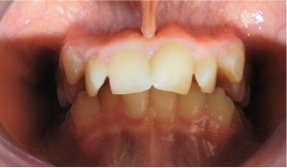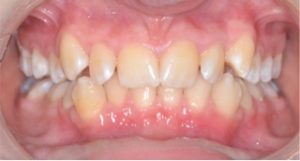A dental solution to chronic sinusitis
How many of you have suffered from sinusitis? The word “sinus” originates from the latin word “sinuo” meaning “wind”. This gives you a clue that sinuses in the region of the head are meant to be “air-filled” cavities.
According to one author, they serve 5 essential functions:
1) Lighten the weight of the head
2) Humidify and warm the air we breathe
3) Increase the resonance of speech
4) Serve as a “crumple zone” in the event of facial trauma.
Regarding this last point, you may have witnessed these “crumple zones” in action protecting the brains of NRL football players in 2014. During the final season, with a heavy blow to the face, Sam Burgess continued to play on with a fractured cheek bone for the duration of the game!
Problems with your sinuses arise when they become fluid-filled or blocked with overgrowth of human tissue (commonly called polyps). “Sinusitis” which is the term used to describe inflammation in the sinus cavities can give rise to the following complications:
1) Pain and tenderness of upper teeth.
2) Severe facial pain around the cheeks, eyes or forehead.
3) Constant headaches.
Sinusitis is quite common amongst Australians. In its chronic form (lasting 3 months or more), nearly 2 million people have the misfortune of suffering with this “disease”.
There are many causes of sinusitis including:
1) Foreign fighters – Viruses, bacteria or fungus.
2) An allergic response – Often called allergic rhinitis.
3) An autoimmune reaction – When your immune system attacks itself.
Traditionally, the treatments for sinusitis have included:
1) Nasal sprays – Non-medicated saline / essential oil blends as well as steroid-based.
2) Antibiotics – If a bacterial infection is implicated.
3) Anti-fungals – If a test sample detects a fungal overgrowth.
4) Anti-histamines – For allergic-type reactions that cause sinusitis.
5) Nasal surgery – If physical obstructions exist that is treatable.
Whenever we see a patient with chronic sinusitis with no long-term improvement, it is important to rule out physical issues as mentioned earlier by consulting with an ENT specialist.
Problems with your sinuses arise when they become fluid-filled or blocked with overgrowth of human tissue.
From a dental perspective, if you have narrow nasal passages that make it difficult to breathe, then it is important that the back of the mouth is also assessed. Enlarged tonsils, adenoids or a “large tongue” that blocks off the back of the mouth should ring alarm bells that breathing may be compromised.
If your teeth are very crowded then there is a strong possibility that you are a mouth breather. There is simply not enough room for your tongue to live inside your mouth! In the majority of cases patients do NOT have a large tongue but a small mouth.
For these patients, dental orthopaedic jaw expansion will widen the jaw, reduce the dental crowding and improve breathing. This can be easily achieved at any age (Pre-teens, young adults and grown ups). The solutions available include both removable and fixed dental orthopaedics.
Below is an actual example of a patient who improved their breathing and their dental crowding after orthopaedic dental expansion was performed:


Patients treated this way often report a noticeable improvement in their breathing, quality of sleep and better moods upon waking. We are actually growing bone around your nose to improve your breathing and reduce your sinusitis symptoms!
In conclusion, it is the hope of this blog that readers may become aware that dentistry can provide a life-line to chronic sinusitis sufferers. Potentially long-term and life-changing improvements to your symptoms when the correct dental treatment is performed.








